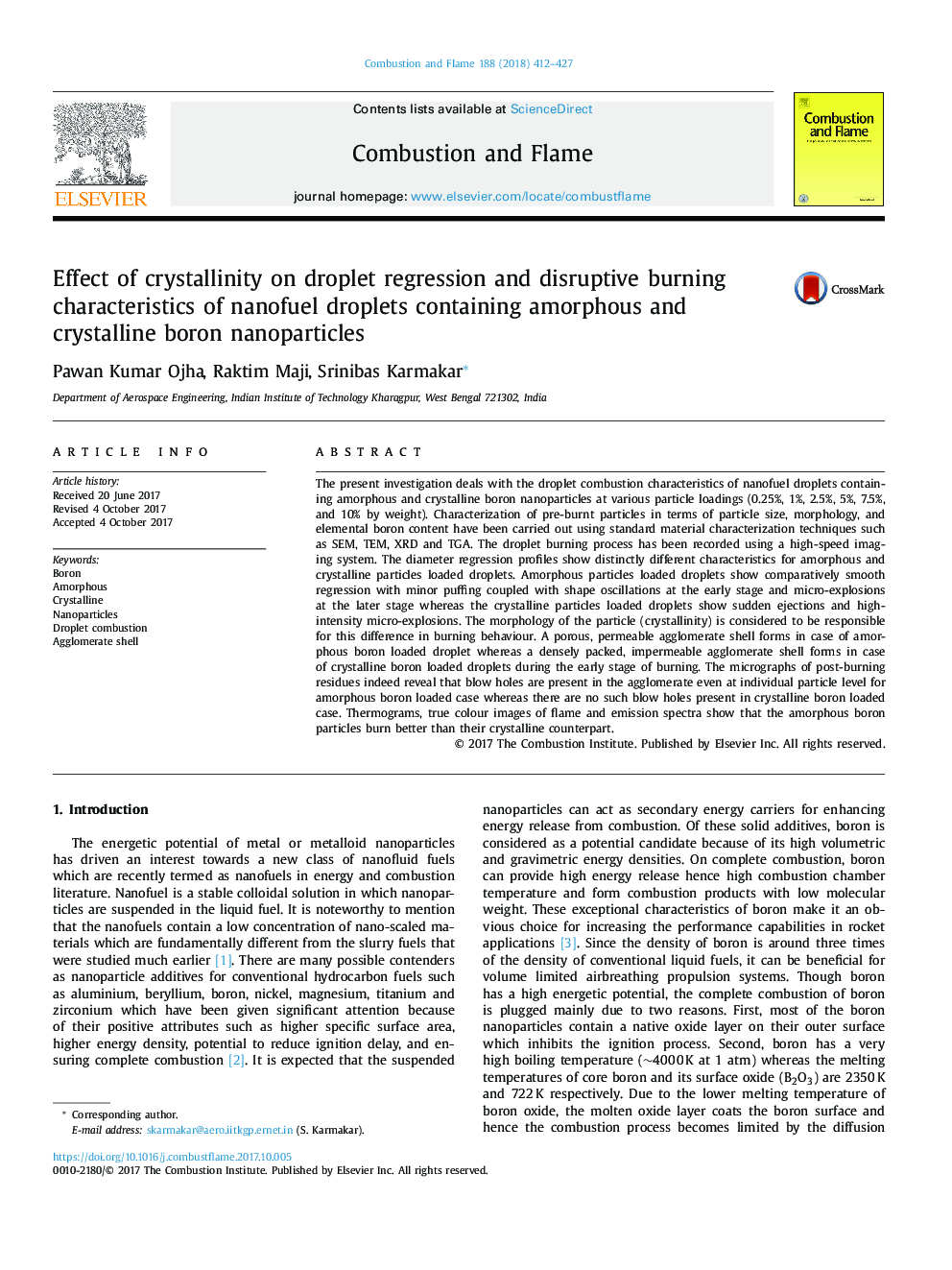| Article ID | Journal | Published Year | Pages | File Type |
|---|---|---|---|---|
| 6593973 | Combustion and Flame | 2018 | 16 Pages |
Abstract
The present investigation deals with the droplet combustion characteristics of nanofuel droplets containing amorphous and crystalline boron nanoparticles at various particle loadings (0.25%, 1%, 2.5%, 5%, 7.5%, and 10% by weight). Characterization of pre-burnt particles in terms of particle size, morphology, and elemental boron content have been carried out using standard material characterization techniques such as SEM, TEM, XRD and TGA. The droplet burning process has been recorded using a high-speed imaging system. The diameter regression profiles show distinctly different characteristics for amorphous and crystalline particles loaded droplets. Amorphous particles loaded droplets show comparatively smooth regression with minor puffing coupled with shape oscillations at the early stage and micro-explosions at the later stage whereas the crystalline particles loaded droplets show sudden ejections and high-intensity micro-explosions. The morphology of the particle (crystallinity) is considered to be responsible for this difference in burning behaviour. A porous, permeable agglomerate shell forms in case of amorphous boron loaded droplet whereas a densely packed, impermeable agglomerate shell forms in case of crystalline boron loaded droplets during the early stage of burning. The micrographs of post-burning residues indeed reveal that blow holes are present in the agglomerate even at individual particle level for amorphous boron loaded case whereas there are no such blow holes present in crystalline boron loaded case. Thermograms, true colour images of flame and emission spectra show that the amorphous boron particles burn better than their crystalline counterpart.
Related Topics
Physical Sciences and Engineering
Chemical Engineering
Chemical Engineering (General)
Authors
Pawan Kumar Ojha, Raktim Maji, Srinibas Karmakar,
